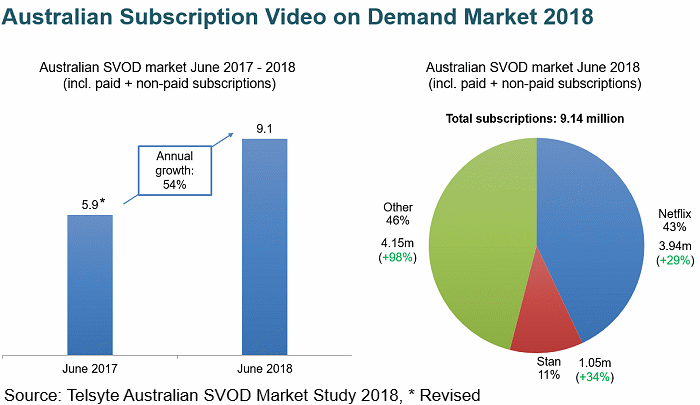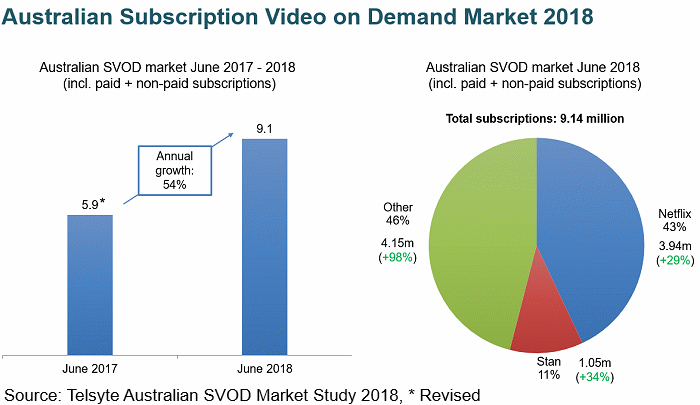Australia's Subscription Video on Demand (SVOD) services market is continuing to grow rapidly, with a year-on-year increase in subscriptions of 54% reported.
Emerging technology analyst firm Telsyte reports SVOD subscriptions reached 9.1 million at the end of June 2018, with an estimated 43 per cent of Australian households subscribed to SVOD services - up from around 30 per cent a year ago.

Streaming video goliath Netflix led the market, with around 3.9 million subscriptions, with Stan coming second with just over 1 million.
Telsyte states unlimited broadband and more generous mobile data caps are underpinning SVOD use and pushing up data consumption across fixed broadband and mobile networks dramatically. Given that using a streaming video service such as Netflix consumes around 1 GB of data per hour for each standard definition video stream and up to 3 GB per hour for high definition video streams, this comes as no surprise.
“Average monthly data usage on mobile and fixed broadband by SVOD users are both over 45 per cent higher when compared to those that do not use SVOD” said Telsyte Senior Analyst Alvin Lee.
Data consumption will continue to spike as more Australians start using internet-connected 4K TVs, which are already in around 15 per cent of Australian households. Telsyte says the presence of these sets will grow to around 50 percent by 2022.
It's one thing to have the hardware capable of streaming 4K, quite another to have connectivity allowing for it to be used - but as NBN and 5G wireless deployments continue, more Australians will be able to stream in 4K HDR quality.
4K uptake will make fast unlimited broadband plans even more popular among households given streaming 4K uses around 7GB per hour (Netflix) and requires a connection capable of speeds of 25 Megabits per second (Mbps). This means some Australian households on slower NBN plans will be unable to take advantage of 4K.
On a related note, the ACCC’s latest broadband speed data released earlier this week indicates there are still a significant number of NBN fixed-line broadband customers (around 7%) who experience less than half of the maximum speed of their plan.
ACCC Chairman Rod Sims says he expects ISPs to better match the plans they offer to achievable speeds on their networks.
The ACCC's monitoring program currently measures ISPs’ average speed performance against the maximum plan speed (25, 50 and 100 Mbps) and across NBN fixed-line technologies.



